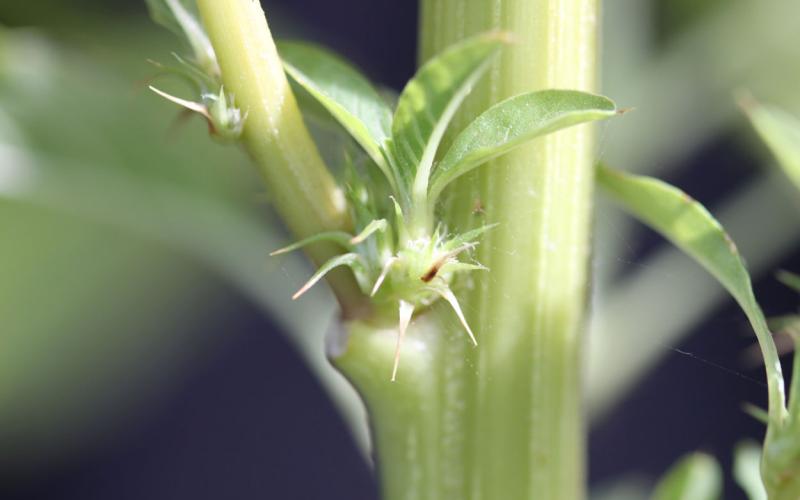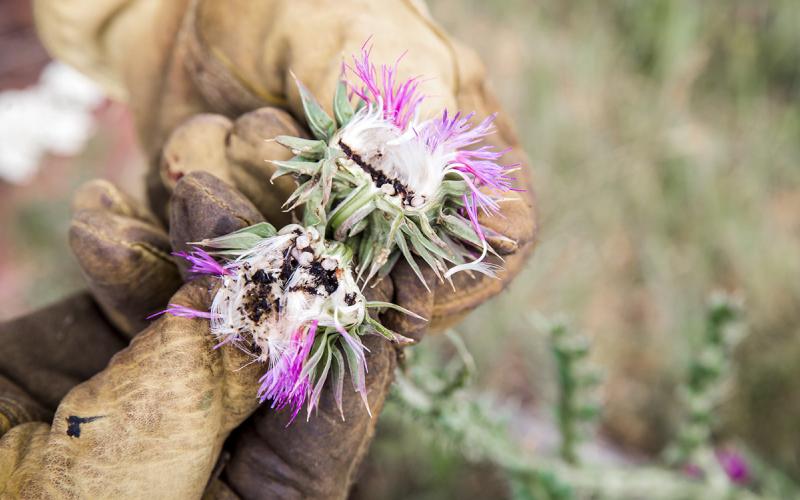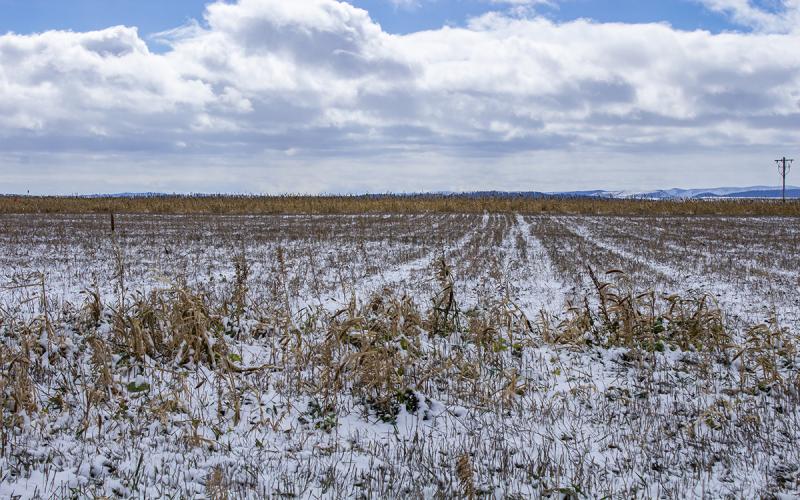Written collaboratively by Eric Jones, Clarence Winter, Philip Rozeboom, Jill Alms, and David Vos.
The 2025 growing season was warm with a lot of precipitation that resulted in several flushes of weed germination. Later emerging weeds can be seen in some crops now, but these weeds likely did not cause a yield loss (Figure 1). Unfortunately, the only means to manage these weeds now is to hand pull and remove them from the field as viable seed is likely present (Figure 2). If weeds are to remain in the field until harvest, the seed should remain within the field.
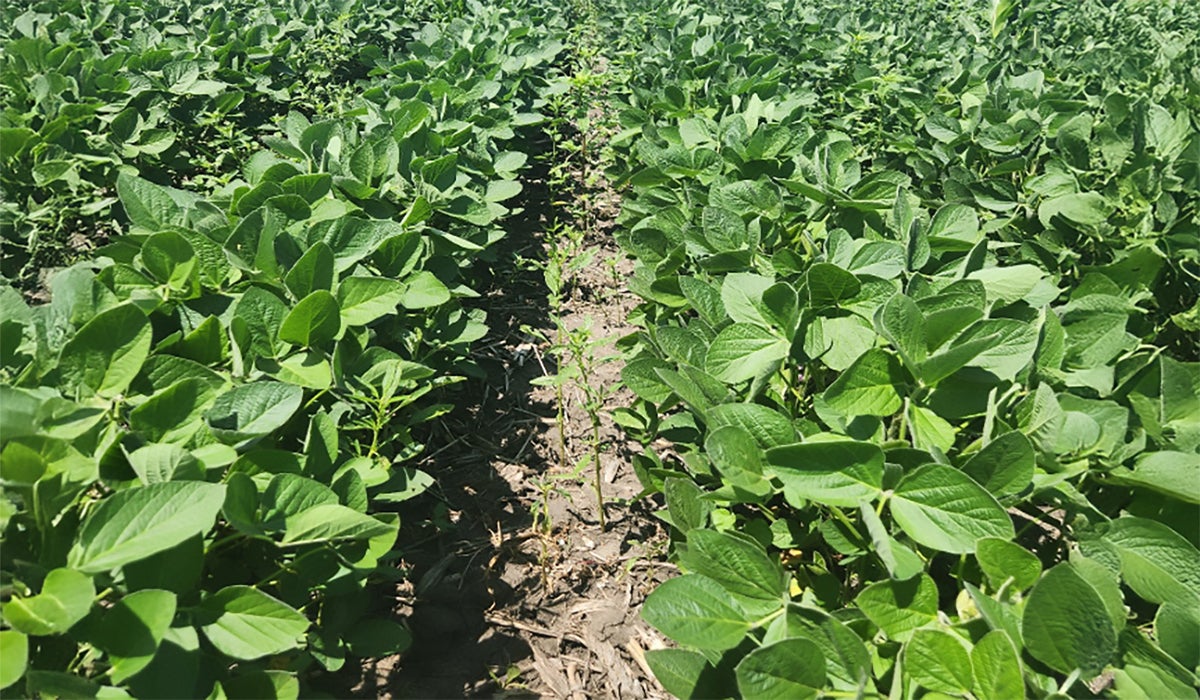
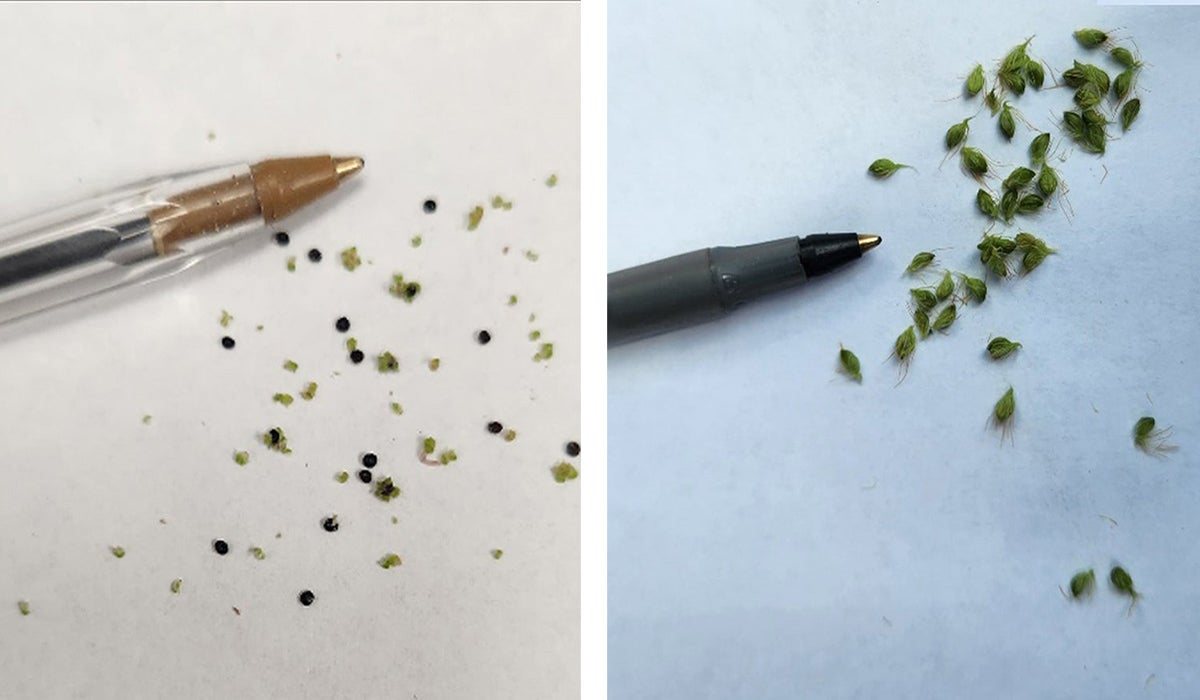
Determining Harvest Order
Despite The warm and wet growing season that promoted continuous flushes of weed germination, weeds are usually present at the time of harvest. The severity of weediness can vary from “clean” to “weedy mess” (Figure 3). Careful consideration should be taken to determine the order of fields to be harvested. What fields are “clean” and a “weedy mess” should be determined by preharvest scouting. Fields that are very weedy should be harvested last. If weedy fields are harvested first, the weed seeds can become lodged into cervices of the combine and be transported to other fields (Figure 4).
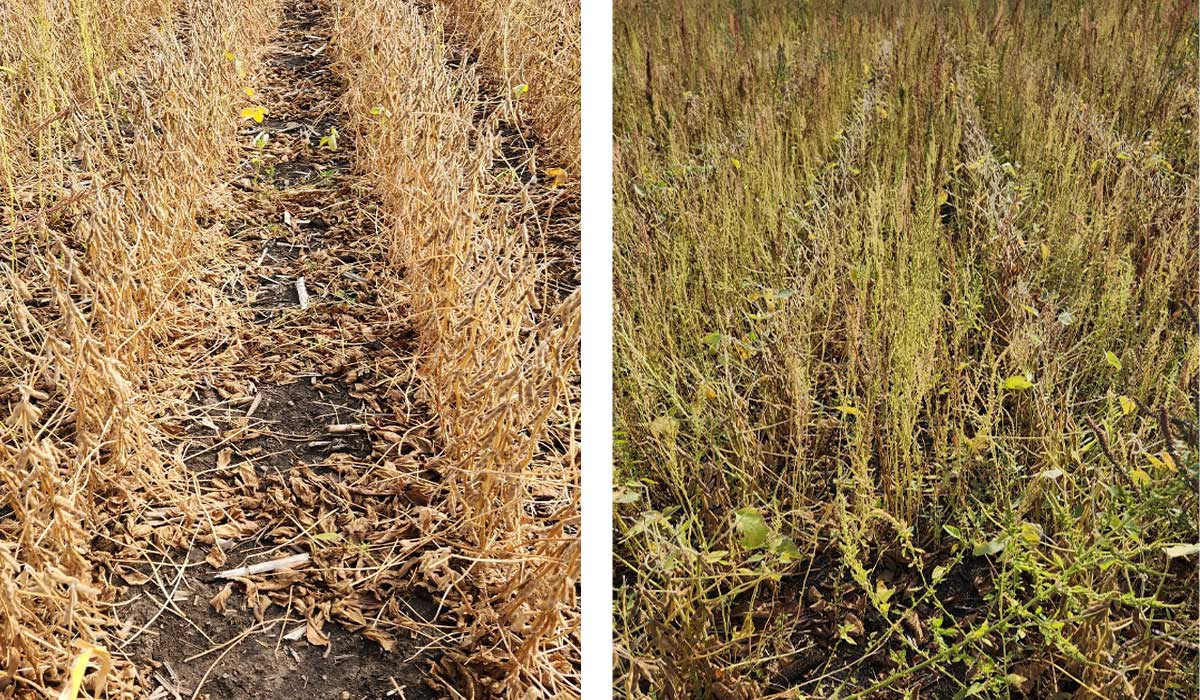
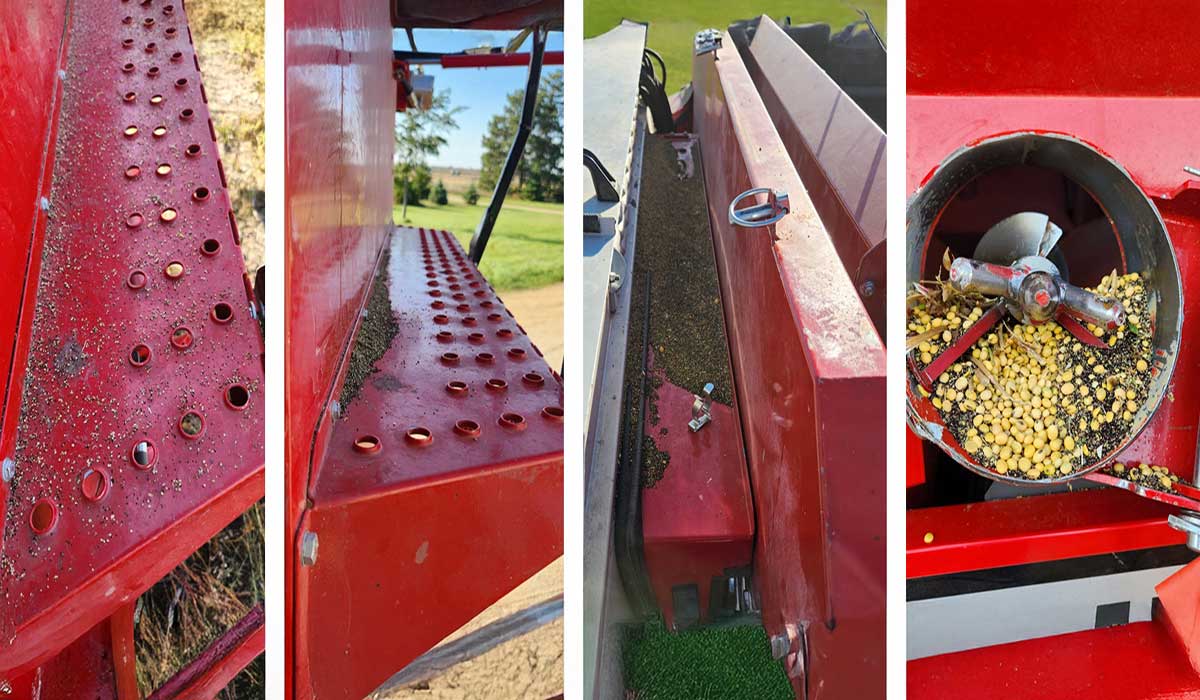
If the next field harvested happens to have low numbers of weeds present, the weed seeds deposited on the combine could be dislodged and added to the soil seedbank. If the field with low weed pressure was harvested first, the field would have less weeds to control in the subsequent growing season. If a weedy patch is encountered in a field, this area can be avoided and combined later. Minimization of weed seed transportation via a combine is especially important if the field has herbicide-resistant weeds or weed species not common to other fields. If weed patches are small and isolated, then these areas can be hand weeded and removed from the field to ensure weed seeds are not returned to the soil or transported by the combine. If weedy patch is unavoidable, the combine should be cleaned before entering a different field.
Additional Considerations
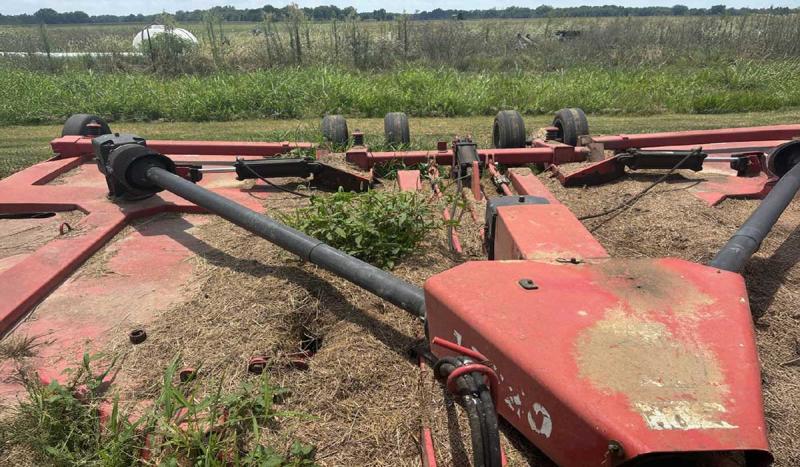
Regardless of the field harvest order, combines should be meticulously cleaned after harvest to remove weed seeds that may have become lodged into cervices. The residues from cleaning the combine should be contained and destroyed to ensure that any weed seeds removed do not inhabit fields in proximity. If machinery is not cleaned, weeds can grow to produce seeds that can inhabit nearby fields (Figure 5).
Weeds can also reduce harvest efficiency. Weeds usually exhibit a higher moisture content than crops and require the combine to operate at a higher output (i.e., increased RPM and fuel consumption). While the crop yield is nonaffected, the result is increased diesel consumption, harvest time, and further stress on harvesting equipment, all of which contribute to potential profit loss.
Weedy fields at the time of harvest should have the location and species present recorded. The records can be used as a reference to ensure that effective weed management is implemented for the next growing season by knowing where the weedy fields are at and what species are present. Refer to the most-recent South Dakota Pest Management Guides for a complete list of herbicides to effective various weeds in different crops.
